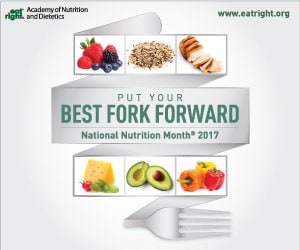Healthy eating on a budget
Jessica George, Registered Dietitian
CentraCare Heart & Vascular Center
 Eating healthy doesn’t have to be more expensive. With some planning, you can make healthier options to fit your budget.
Eating healthy doesn’t have to be more expensive. With some planning, you can make healthier options to fit your budget.
You could make a meal with a box of mac and cheese for $1 but what you really want is to make a nutritious meal that doesn’t cost a lot. Don’t despair — it is possible!
Check out these budget-friendly tips for nutritious choices:
- Plan ahead. Before shopping, plan your meals and snacks for the week. Look at what ingredients you already have in your cupboard and what you need to buy. Make a shopping list and stick to it. Spontaneous purchases add up fast.
- Go big. Double recipes that you can use for lunches or freeze for future meals. Usually buying in bulk is less expensive.
- Shop savvy. Check store circulars for sales — especially when it comes to more expensive items such as meat. While at the store, compare prices of different brands and sizes to see which has a lower unit price. And, of course, clip coupons.
- Time it right. When you buy fresh fruits and vegetables that are in season, they are usually less expensive and they taste better. Just buy what you need for the week to avoid having to throw away spoiled produce.
- Fresh alternative. Sometimes frozen and canned fruits and vegetables are less expensive than fresh. For canned items, choose fruit canned in 100 percent fruit juice and vegetables with “low sodium” or “no salt added” on the label.
- Stay focused. Make the most of your food dollars by finding recipes that use less expensive ingredients such as beans, peas, and lentils; sweet or white potatoes; eggs; peanut butter; canned salmon, tuna or crabmeat; grains such as oats, brown rice, barley or quinoa; and frozen or canned fruits and vegetables.
- Portion control. Use smaller plates, bowls and glasses. Fill half of your plate with fruits and vegetables and the other half with whole grains and lean meat, poultry, seafood or beans. To complete the meal, add a glass of fat-free or low-fat milk or a serving of fat-free yogurt for dessert.
- Snack attack. Most snacks cost more when packaged individually. Buy large tubs of low-fat yogurt or cottage cheese and divide them into one-cup containers. Combine nuts, dried fruit and whole grain pretzels or cereal to make your own trail mix.
- Do it yourself. Convenience foods such as frozen dinners, pre-cut vegetables and instant rice or oatmeal cost more than if you make them from scratch.